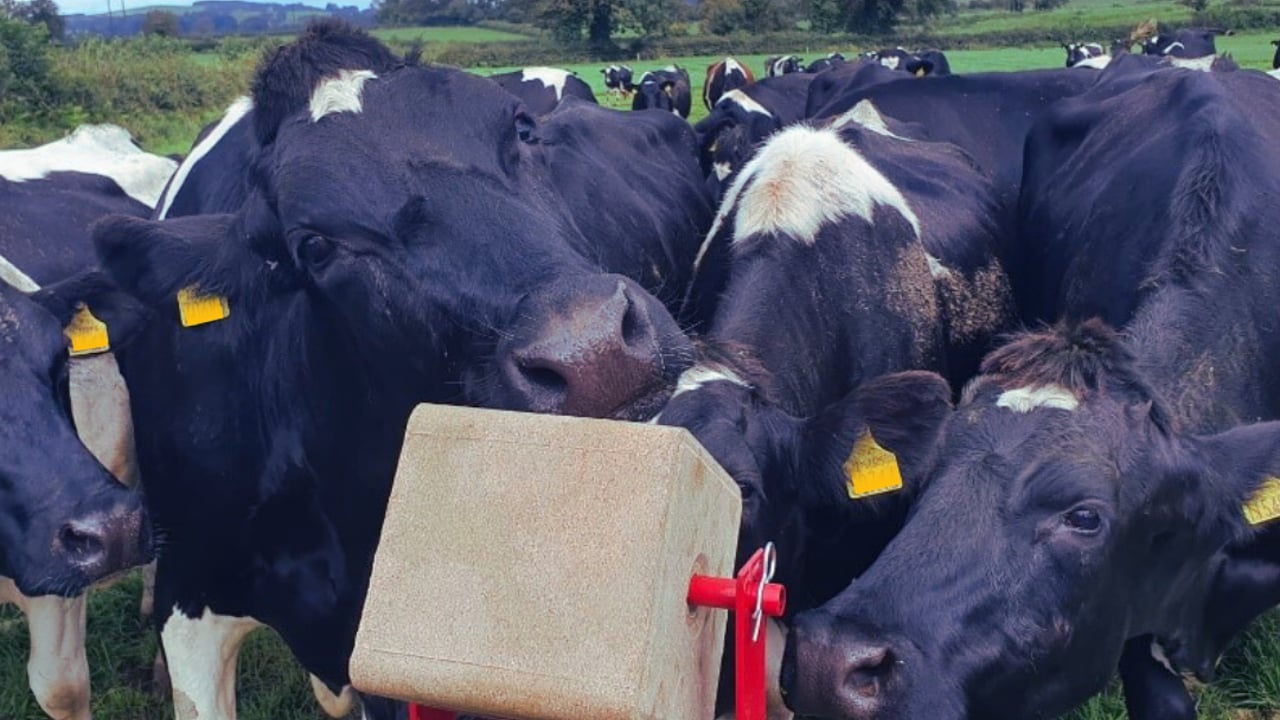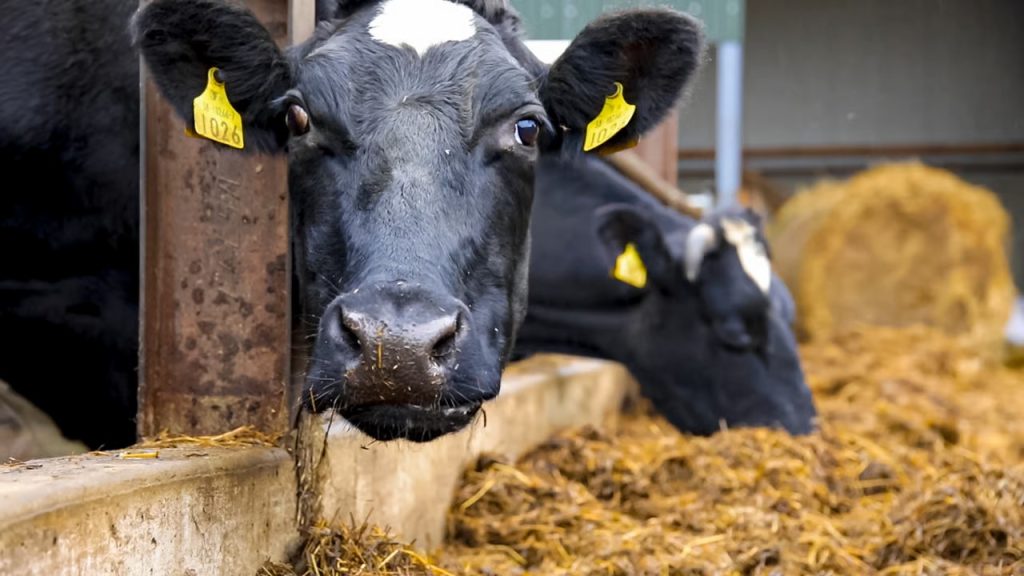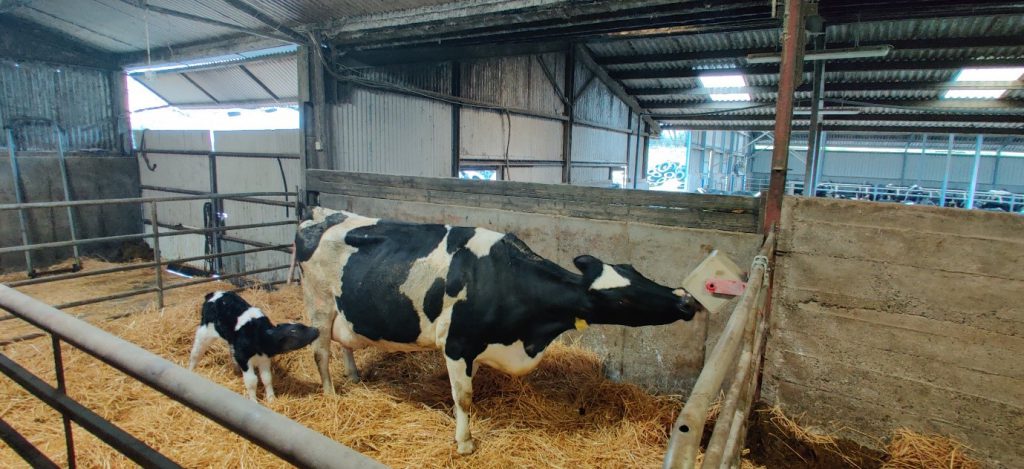Grassland Agro Efficient Animal Production Series


Increasing profits through boosted animal health and performance
Agriland Media Group is delighted to team up with Grassland Agro for the ‘ Efficient Animal Production Series’, which will look at how high-quality, targeted nutrition and effective soil management has helped farmers to maximise outputs to the highest standard in an efficient fashion.
In this third instalment, we look at the optimum amount of minerals for animals as winter approaches.
The majority of the winter milking herd will have calved down by now, however, it is important not to take your eye off the ball with the last of the herd.
With the pens full of calves, and cows trying to get in the last of the available grass, it is easy to half neglect the last of the mob who have not yet calved.
In reality, some of these animals need more focus than the others as the long dry period may lead to over-conditioning and therefore metabolic issues.
This is why it is crucial to ensure these animals are being fed the optimum amount of minerals to boost the animal's health and performance.
Optimum minerals will allow for a successful calving and drive high quality milk production, letting the farmers avail of winter milk bonuses.
This is more important than ever for liquid milk suppliers following the recent milk price drops, as the winter milk system is already costly, with Teagasc stating the costs of maintaining the average cow for the year-round supply of liquid milk has increased by over €460 since 2021.
Minerals
Grassland Agro's Luneo Precalver is a balanced dry cow mineral designed to support the immune system during the transition period from dry to freshly calved.
The 15kg mineral lick is loaded with macronutrients, helping to prevent metabolic issues while driving performance.
With 6.5% magnesium (Mg), 4% calcium (Ca) and 110,000 mg/kg of vitamin D, the lick will help prevent any freshly calved cows going down with milk fever (a disorder that costs up to €300/cow for clinical cases).
The lick also contains 18% sodium (Na), acting as a vital electrolyte during the transition period, and helping to control hydration and osmotic balances.
There is 5.5% phosphorus (P) in the mineral lick, which boosts milk production, fertility and energy metabolism.
The rest of the lick is made up of 82% mineral matters as well as minerals A, D, and E.
In addition to all that, the blocks also contains essential trace elements zinc, copper, manganese, iodine, cobalt, and selenium.
With everything combined, feeding this pre-calver does not just help with metabolic disorders, it also has the ability to improve colostrum quality, promote easy calving, and boost future reproduction rates.
On top of all of that, Luneo Precalver also helps reduce the risk of weak calves, stress, and foetal abnormalities.
If you do not keep on top of these issues by providing adequate minerals, you will experience some serious knock on affects that can have big costs.
For example, cows that get clinical milk fever are;
- 1.7x more likely to suffer from metritis;
- 2x more likely to be culled from the herd in the first 30 days of lactation;
- 2.6x more likely to experience dystocia;
- 3x more likely to experience a retained foetal membrane;
- 4.8x more likely to have a left displaced abomasum;
- 8x more likely to suffer from ketosis; and
- 8x more likely to suffer from mastitis.
Pre-calving
In the weeks leading up to calving, a lot of farmers are also opting to feed the minerals as they contain Calseagrit Iotech, which acts as a digestive aid.
This helps improve feed intake post-calving, as it is easy for milk yield to rise quicker than feed intake post calving, leading to a negative energy balance (NEB).
NEBs lead to lost milk production, as well as lost condition as cows' 'milk off their back', which can lead to further issues down the line.
Farmers should remember that their freshly calved cows typically only have an intake of 11-12kg post calving, which slowly rises by 1.0-1.2kg/week after.
To prevent any problems in this period, the 100% natural Calseagrit Iotech, derived from seaweed, improves digestion of forage in the diet by delivering a favourable pH and energy supply for bacteria activity and therefore maximising the utilisation of the minerals fed.
Boosting performance
At this time of the year, a lot of farmers are putting in the extra work to boost their herd's performance and welfare by ensuring a high standard of hygiene is in place.
Without proper hygiene in place, the risk of infections such as mastitis are colossal, a scourge that costs the average dairy farm €60/cow/year.
At this stage, farmers should have the majority of work done in terms of carrying out a thorough cleaning and disinfection of the shed.
However, it is never a 'one and done' job, cubicles must maintained regularly to ensure cows do not go up to far and dung on matts, the same goes for maintaining scrapers.
Beds must be cleaned regularly, with suitable products such as Grassland Agro's Actisan 360 being applied after.
By applying Actisan 360 in cubicles at a rate of 100g/cow every two days, or 200g/adult every two days (100g/calf every two days) in deep beds, housing hygiene will be improved as the product absorbs moisture, neutralises odours, and binds ammonia.
By combining all of these practices, farmers can boost animal health and performance, and therefore drive profits.
To find out more about Grassland Agro’s mineral block range, click here.

